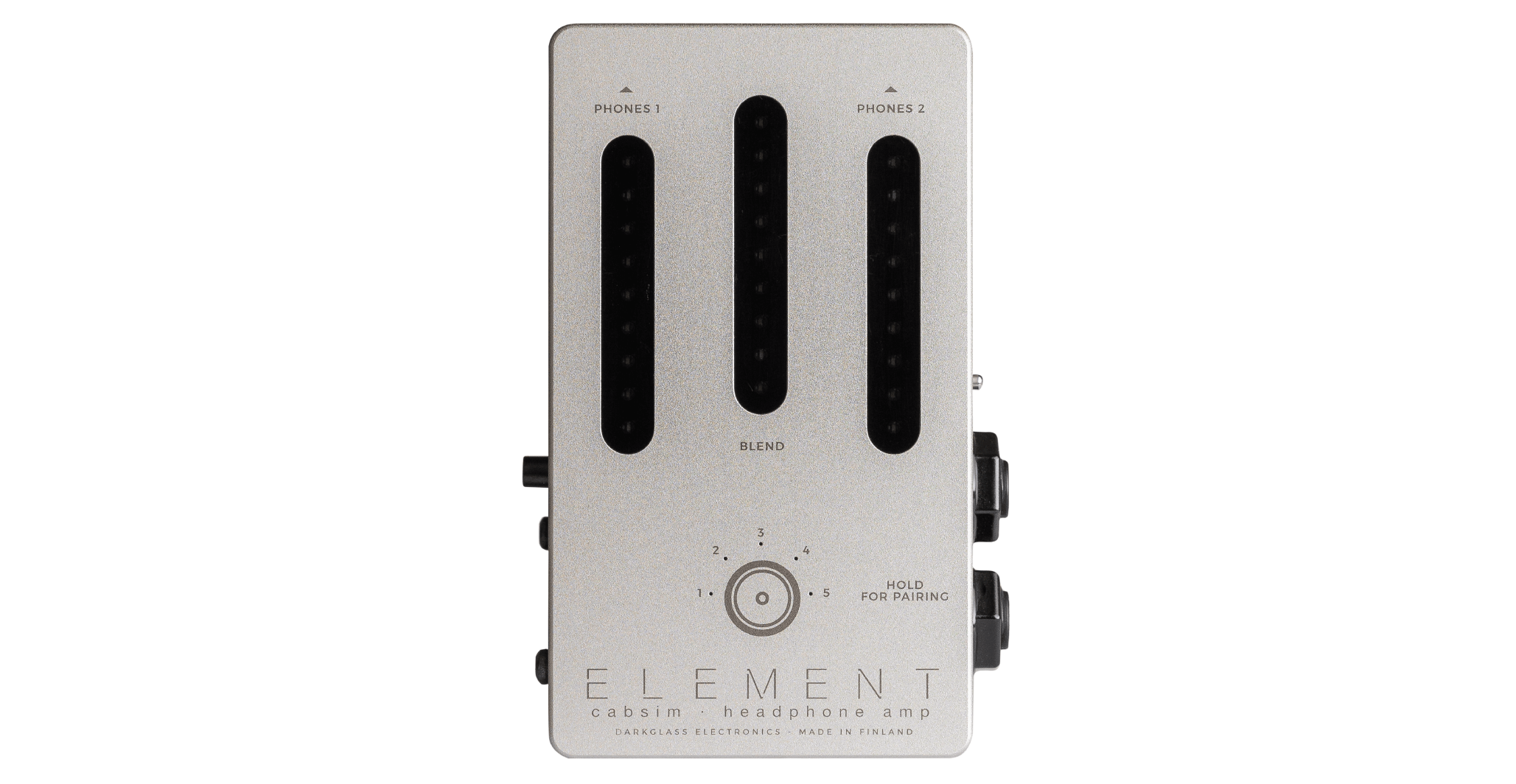
Ξ

Toggle the cabinet simulation on/off on the Direct Output.
A touch sensitive slider to set the blend between the main input (Instrument/Amp in) and the backing track (Bluetooth/Aux in) for the headphone out mix.
Two touch sensitive volume control sliders, one for each headphone output.
Width: 64 mm / 2½″
Length: 111 mm/ 4¼″
Height: 35 mm / 1½″
Weight: 245 g / 0.54 lb
The Element has a current draw of 250mA. Only use a regulated 9V DC adapter with a center-negative plug. Unregulated power supplies and/or higher voltages may result in suboptimal noise performance and even damage your unit, voiding the warranty.
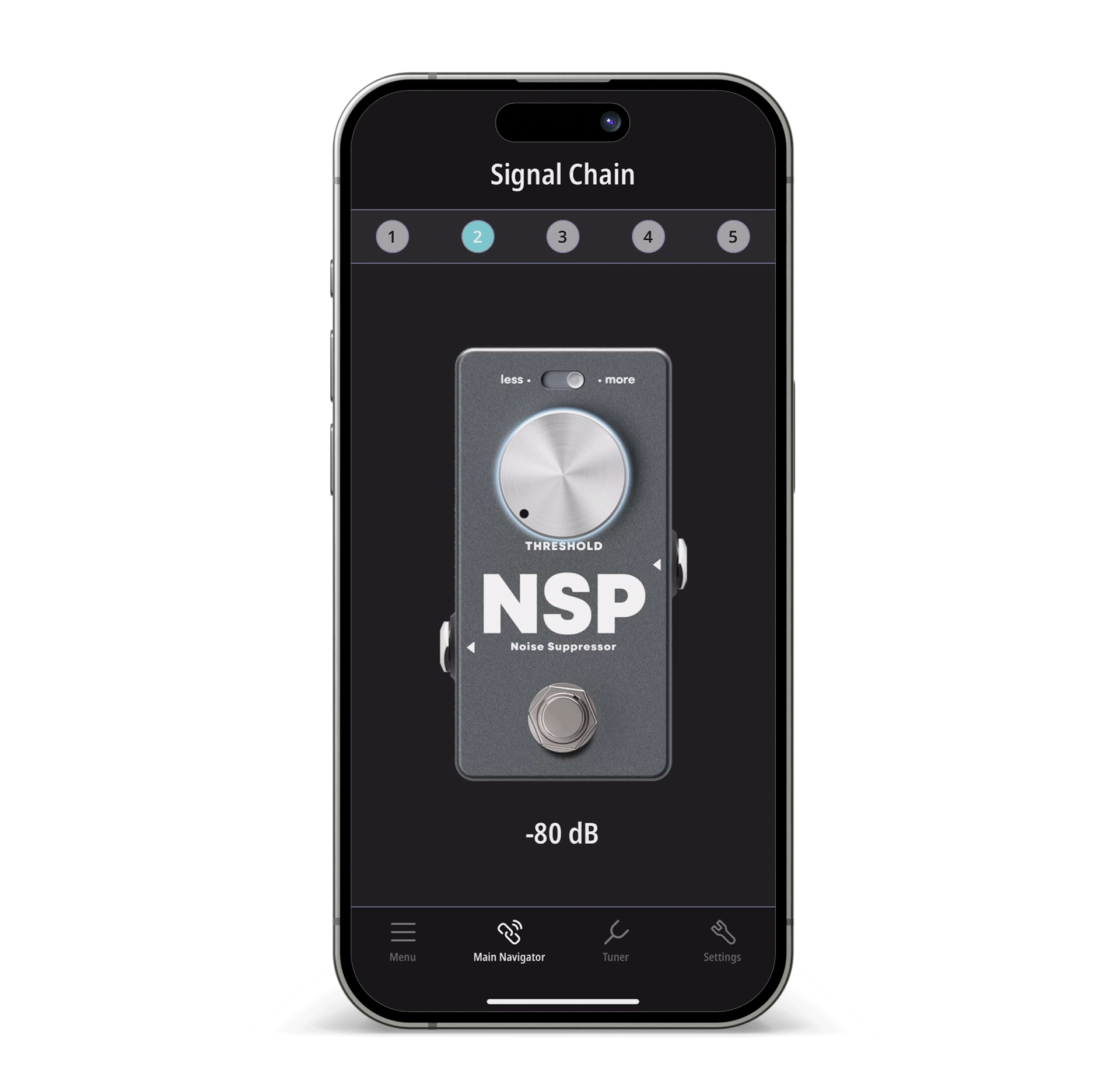
An application for desktop and mobile platforms that unlocks extra features on the Element, such as two different types of graphic EQs, tube power amp simulations, and access to a growing library of high-quality IR cabinet simulations. The desktop version also enables firmware updates and loading your own 3rd party cabinet simulations.

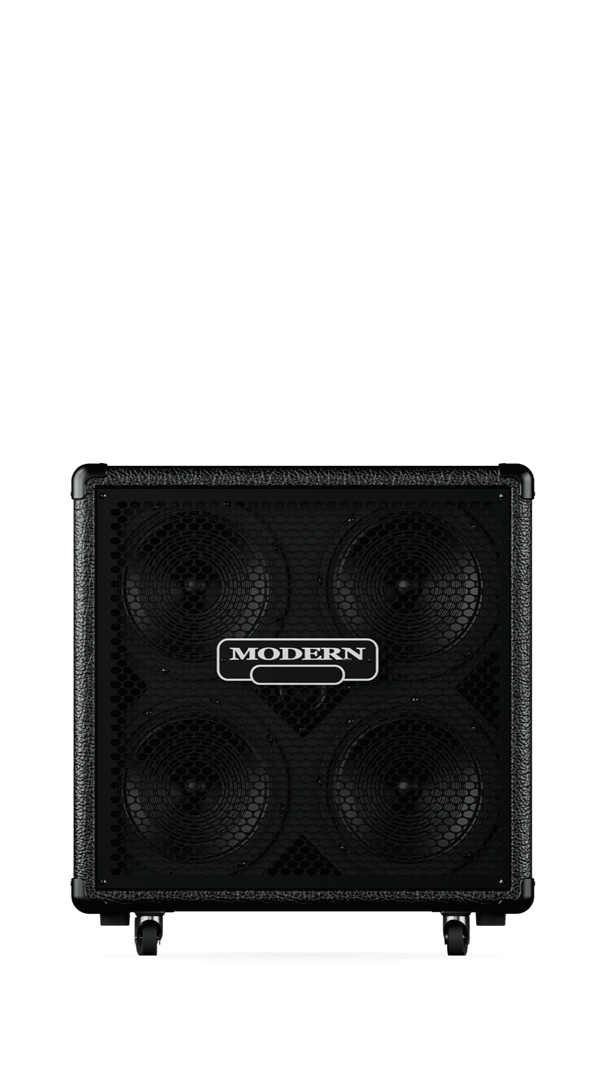
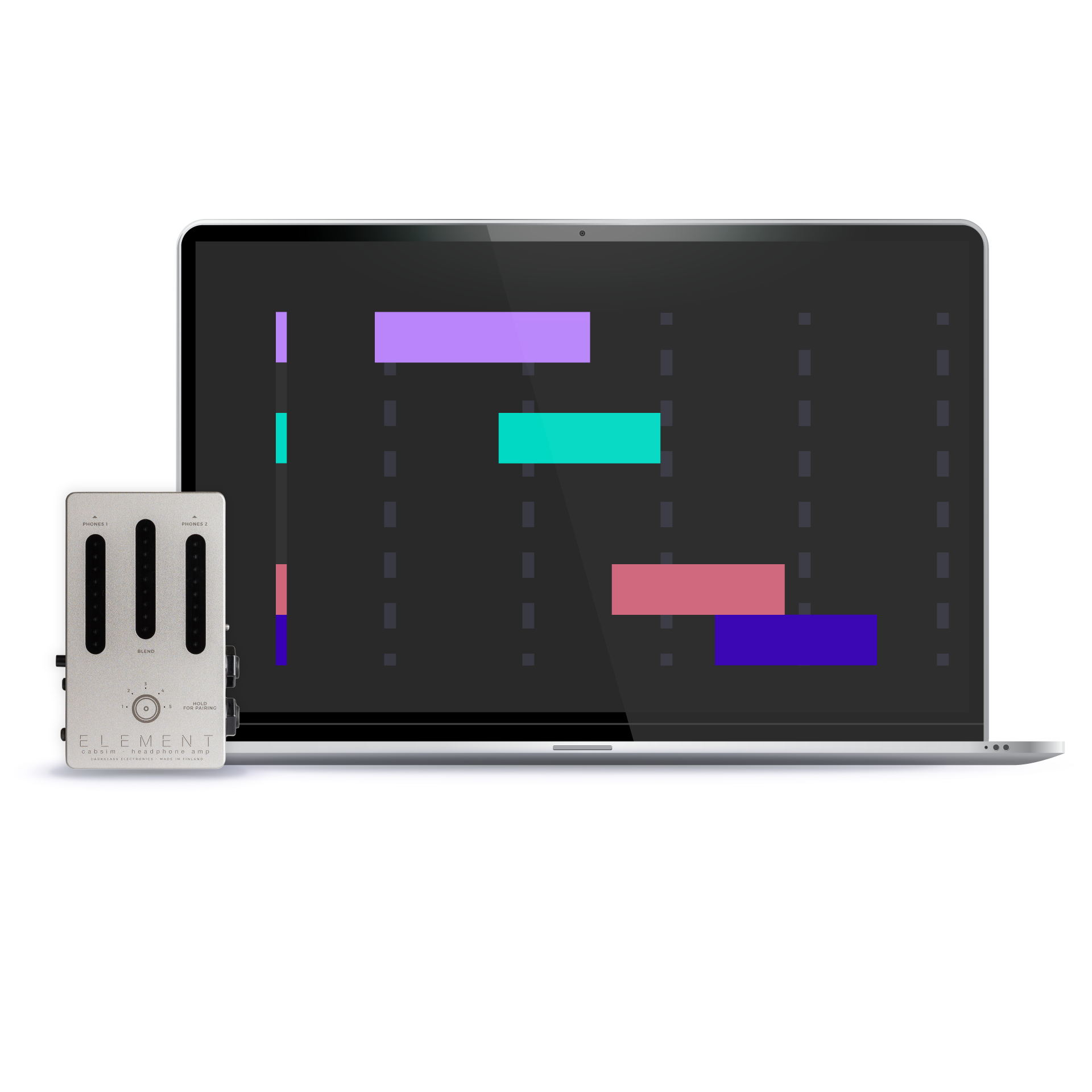
Record your ideas wherever you are by connecting the Element to your PC or Mac (on macOS no drivers needed).
The instrument input records on two tracks, one with cabinet simulation and one without any effects.
Recording of stereo sources is also possible via the aux in. Independent mixes can be sent to the two headphone outputs from your favorite DAW.
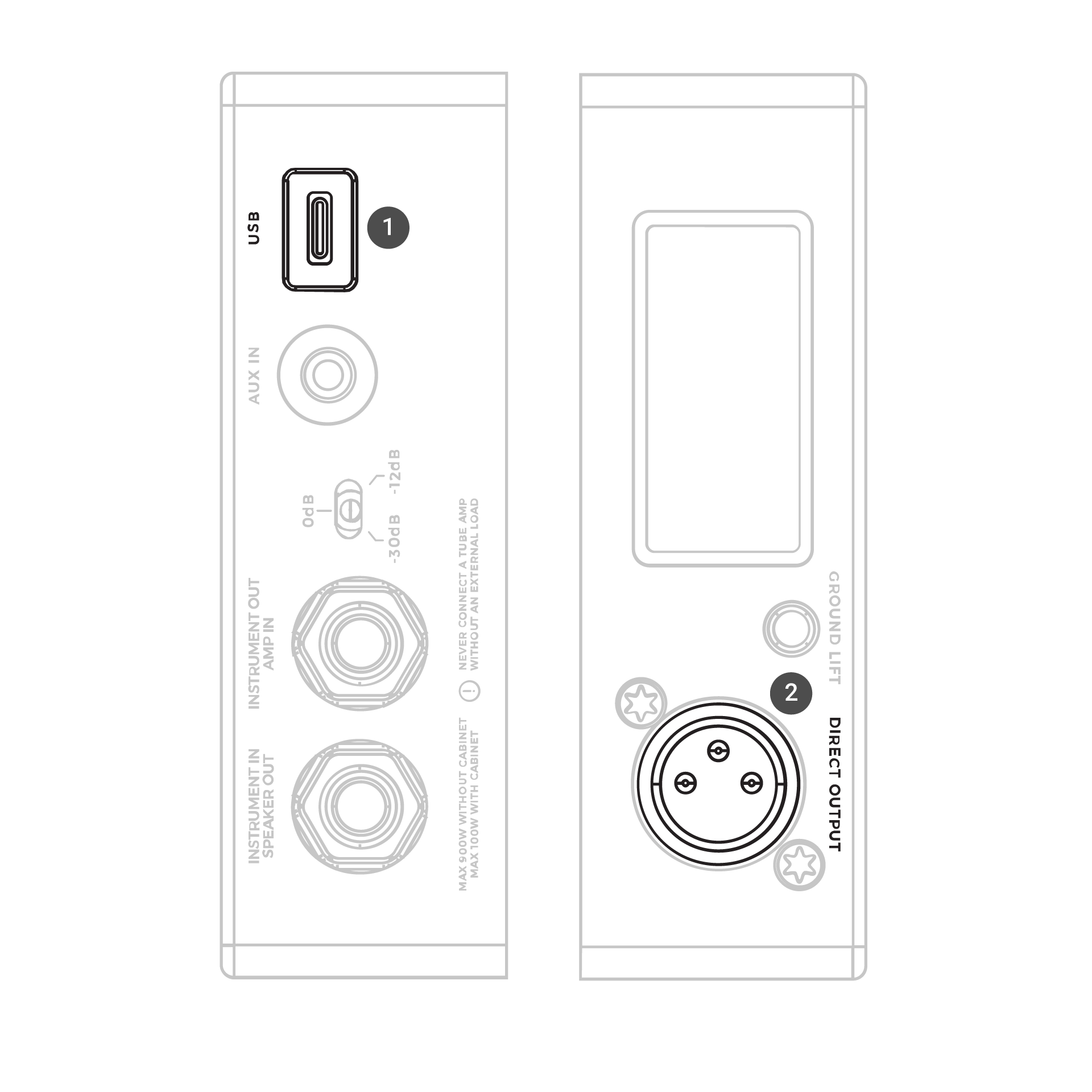
The USB-C port unlocks Element’s USB audio interface capabilities and enables interaction with the Darkglass Suite desktop app, allowing for software updates and access to the Darkglass IR library, containing hundreds of cabinet simulations.
An XLR output with a ground lift switch provides a reliable standard connection to a mixing desk or an external audio interface for a guaranteed low-noise signal.
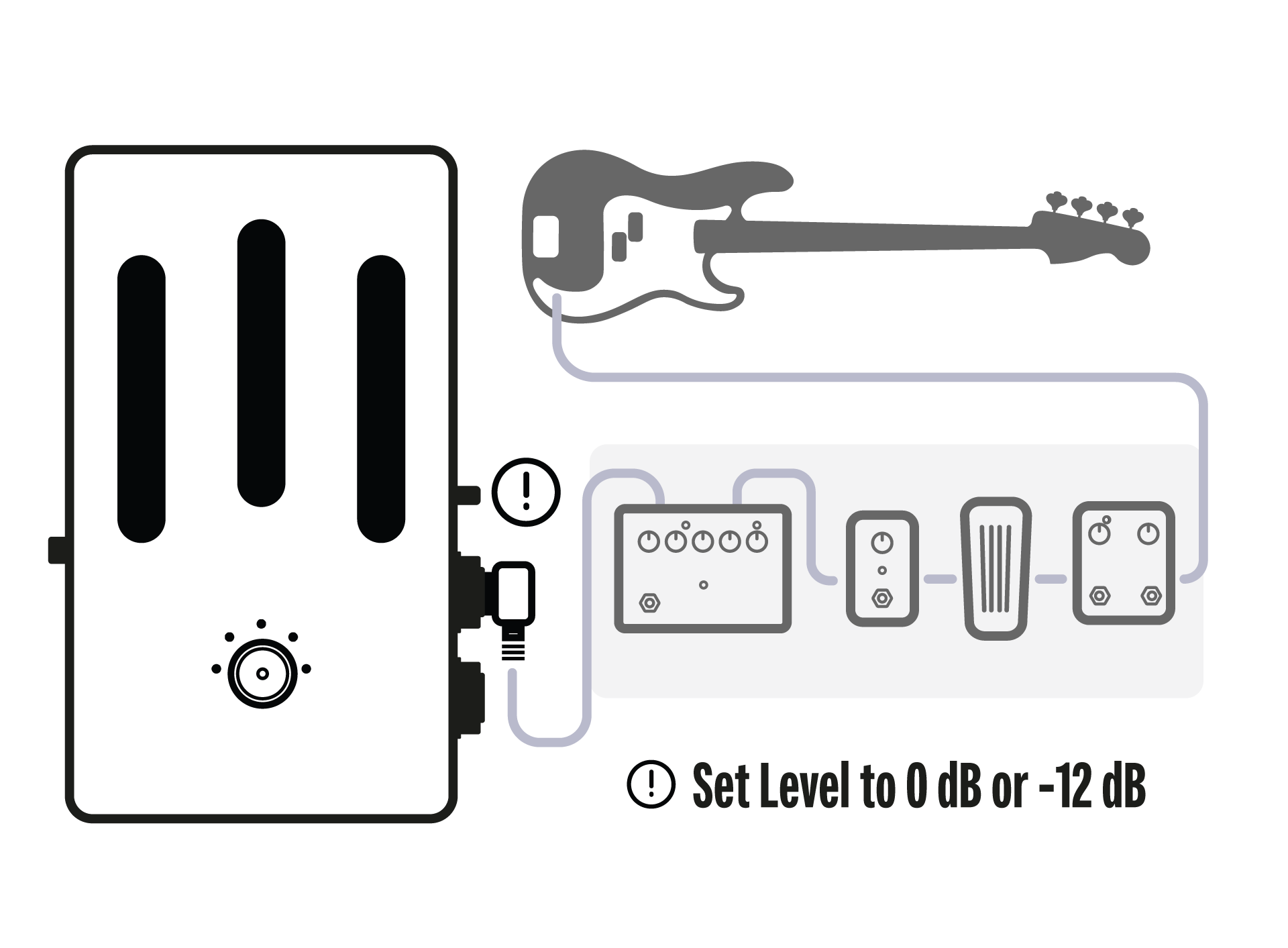
Connect your instrument to your pedalboard as you normally would and add the Element at the end of the signal chain. Use the input labelled “INSTRUMENT IN” on the Element.
You can now choose the impulse responses in slots 1-5 or the bypass signal. From here, the signal is passed through to the XLR output and via the blend and volume controls to the headphone outputs.
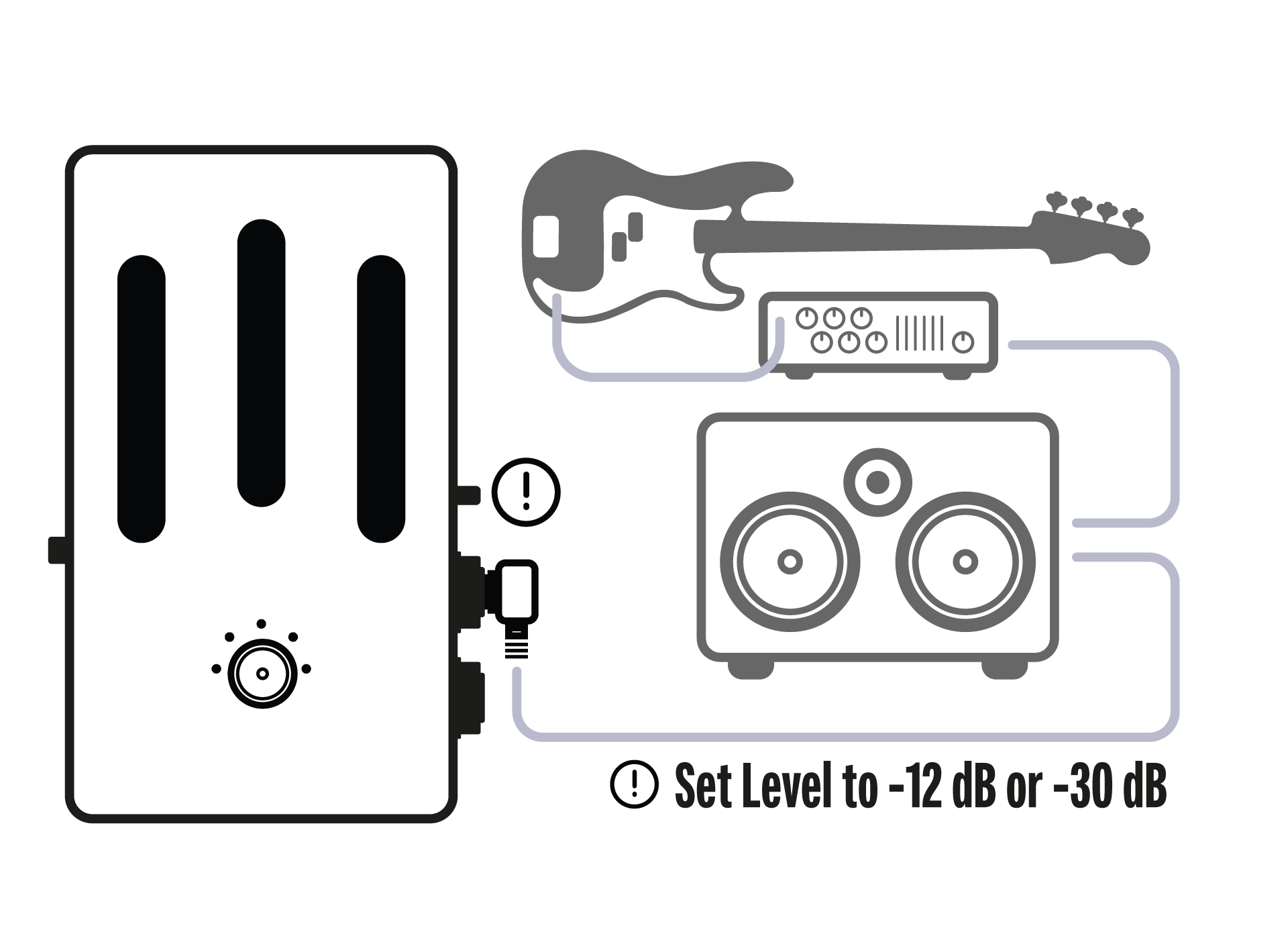
Note: The Element does NOT act as a loadbox! Always make sure your amplifier is connected to a suitable load!
The Element is built to work with amplifiers with a maximum output of 900 W. For the safest operation, it is advised to connect the Element after your speaker cabinet from your speaker cabinet’s parallel output connector. Use the input labelled “AMP IN” on the Element.
You can now choose the impulse responses in slots 1-5 or the bypass signal. From here, the signal is passed through to the XLR output and via the blend and volume controls to the headphone outputs.
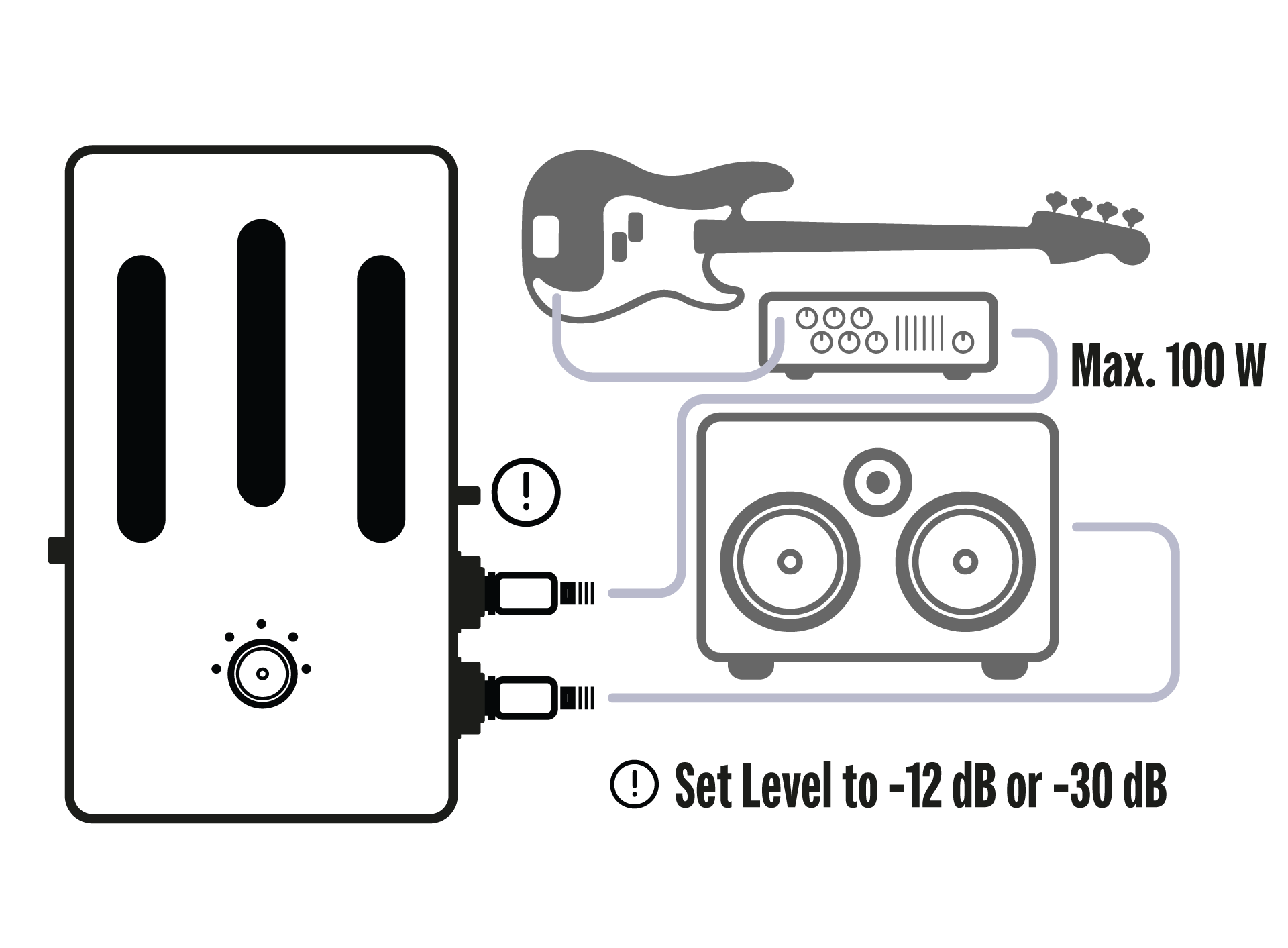
If the amplifier’s maximum output is 100 W, the Element can be connected between the amplifier and the speaker cabinet. Use the input labelled “AMP IN” for the amplifier and the output labelled “SPEAKER OUT” to connect the speaker cabinet to the Element.
You can now choose the impulse responses in slots 1-5 or the bypass signal. From here, the signal is passed through to the XLR output and via the blend and volume controls to the headphone outputs.
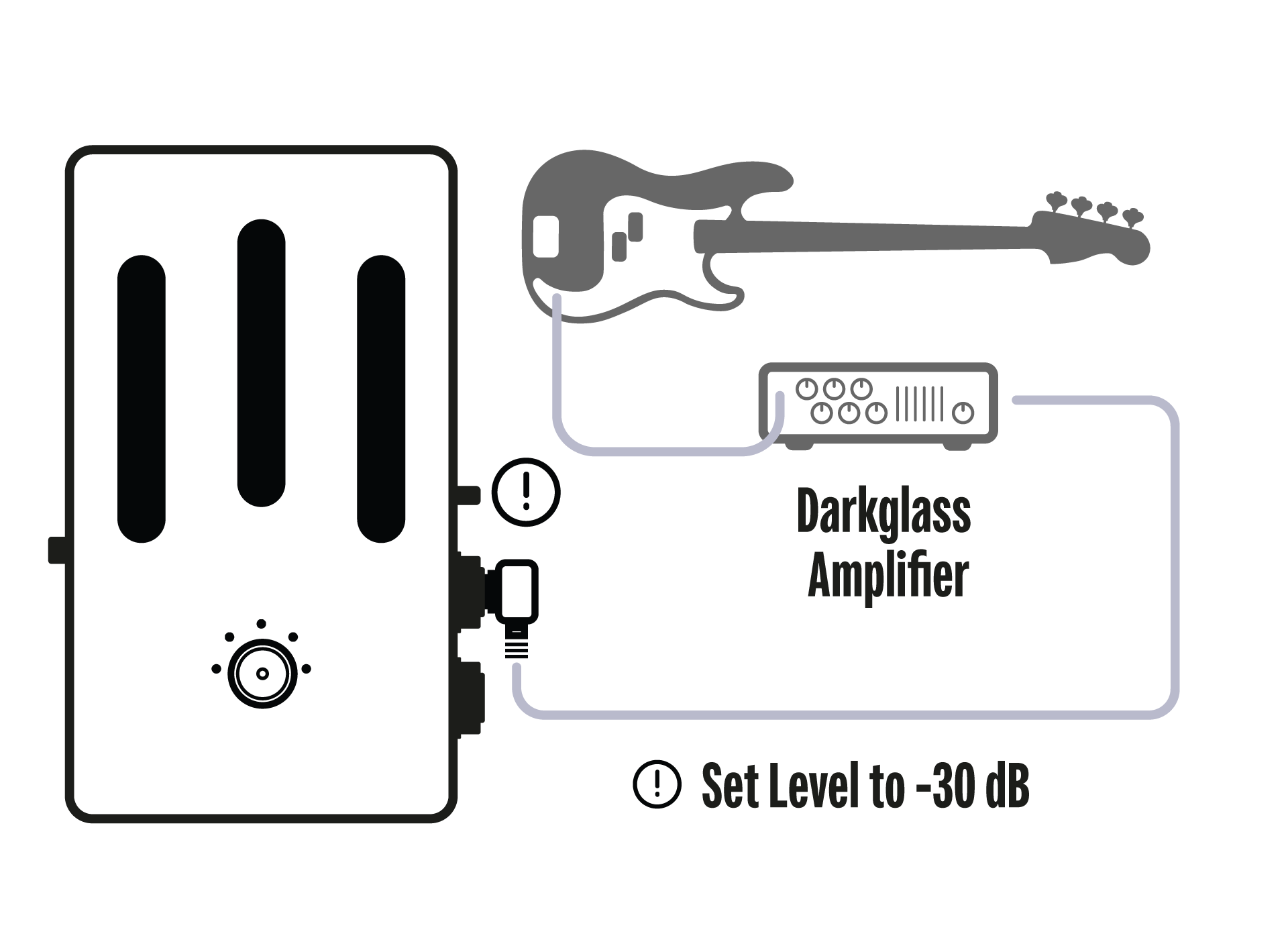
If you are using a Darkglass amplifier with a class-D power amplifier, you have the option to connect the amplifier straight to the Element without using a speaker cabinet or an external load. Use the input labelled “AMP IN” on the Element.
You can now choose the impulse responses in slots 1-5 or the bypass signal. From here, the signal is passed through to the XLR output and via the blend and volume controls to the headphone outputs.

Never connect an amplifier to “AMP IN” simultaneously with an instrument to “INSTRUMENT IN”!!! This could lead to an electric shock and also break your equipment!
· Two 6.3 mm jacks that can be used as:
· Balanced/unbalanced instrument input and output or
· Amplifier input and speaker (through) output.
0 dB / -12 dB / -30 dB
You can connect Element to your Mac or PC with the USB-C port to load cabinet simulations and control various other settings in the Darkglass Suite.
You can connect the line/headphone out of your laptop/keyboard/mixer etc. into the 3.5 mm aux input on the Element.
Balanced XLR output for connecting the pedal to a microphone preamp, PA system etc.
Disconnects the signal ground on the Direct Output to break any ground loops. Set this switch to either position that has less noise. The switch does not affect the ¼” output.
Use a 9-12V DC power supply (Center negative 2.1/5.5 mm barrel plug). Current consumption 250mA.
Two 3.5 mm headphone outputs.
In the interest of continuous improvement, specifications are subject to change without notice. If you have any questions, please don’t hesitate to contact us at support@darkglass.com
The manufacturer claims that the above product fulfills the requirements as set by EN 62368-1:2014+A11:2017, EN 55032:2015, EN 55035:2017, EN 61000-3-2:2014, EN 61000-3-3:2013, EN 62479:2010, ETSI EN 300 328 V2.2.2 (2019-07), EN 62311:2008, ETSI EN 301 489-1 V2.2.3 (2019-11), ETSI EN 301 489-17 V.3.1.1 (2017-02), RoHS, WEEE.